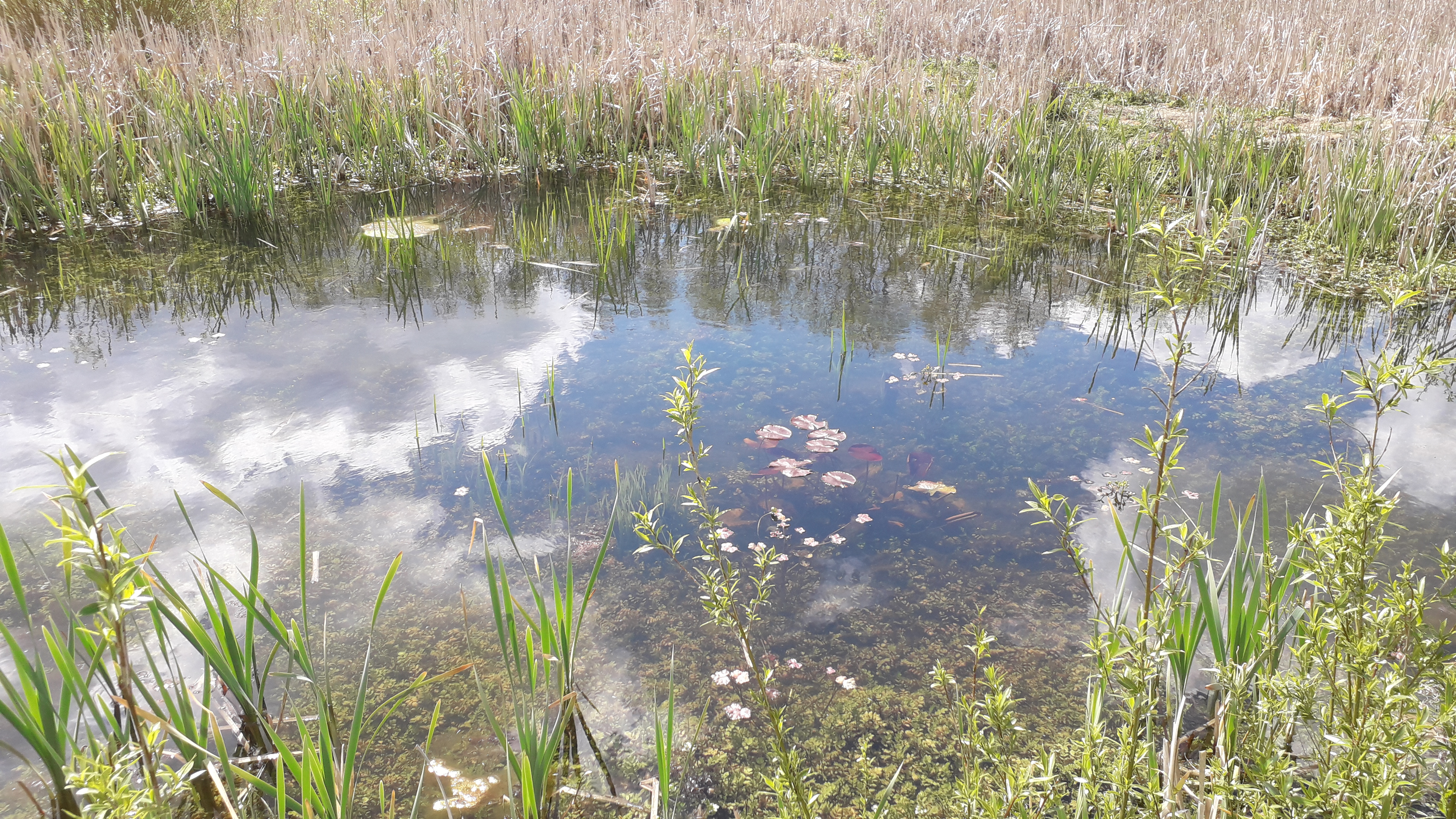Sheffield Council's case study considers collaboration with external stakeholders including the University of Sheffield to deliver a range of nature recovery projects in an urban area.
Introduction
Sheffield City Council is using a variety of projects and methods to deliver nature recovery across the city while ensuring that future development reflects and enhances natural assets through their local plan allocations.
Background
Commended by the Peak Park Planning Authority and Natural England for their approach to nature recovery, the Council’s ecology and planning teams are using a holistic approach to identify areas that best support green infrastructure development and urban nature recovery. Taking a multidisciplinary and landscape scale approach, the Council have brought together a number of separate nature recovery projects as well as informing work on their new local plan and allocations for housing sites.
Timeline
Ongoing nature recovery projects
Green roofs
Sheffield City Council has been a pioneer for improving nature recovery in its urban areas through green roofs. Its role within the Green Roof Centre prompted research and policy development in considering how green roofs can provide biodiversity benefits while simultaneously reducing noise, air and heat pollution.
Previously, Sheffield City Council had worked collaboratively to build Sheffield’s greenest school: Sharrow Primary School which includes a wildflower biodiverse roof, and over 700 plants planted by the local community.
More recently, the Council’s ecology and planning teams have contributed to the City Centre Strategic Vision which seeks to promote green roofs in all new developments in order to increase the biodiversity of the city.
Bat and bird boxes
One of the Council’s most successful projects began when the roofs of over 7,000 council homes in the city needed replacing. An inspection identified the presence of bats and swifts nesting in many of the roofs and to accommodate these Sheffield City Council sought approval from Natural England to replace the roofs with new bespoke roofing tiles that are able to support bat and swift nesting. The ability for Sheffield City Council to adapt to support nature recovery was recognised by CIEEM and they were presented with a highly commended award.
The Council is continuing to promote and engage with local developers to showcase how housebuilding and development projects can integrate nature recovery. For example, working with Sheffield University to integrate biodiversity within architecture courses for under-graduates.
Sheffield Wetland Corridor
Sheffield City Council collaborated with Froglife, Veolia Environmental Trust, the Environment Agency and National Grid on a project to create 34 ponds along a 4km stretch of the city. The project ran between 2018-2020 and was funded by the Veolia Environmental Trust.
Sheffield City Council is continuing to identify ways in which nature recovery can be achieved through the use of existing nature corridors. Working pragmatically and using their relationship with local universities, the Council has been able to direct post graduate student research to opportunity areas, providing valuable data on the ecology of their own land holdings as a basis for new projects. For example, PhD students have surveyed the “pond scape” between habitats along local railway lines with a view to protecting and enhancing these as natural corridors through the city.
Mapping and planning policy
The council utilises eco-system services mapping to approach natural capital in a universal way, creating an evidence base for potential nature recovery projects in the future.
The Sheffield City Region Mayoral Combined Authority, now the South Yorkshire Mayoral Combined Authority, funded a project in 2021 to map the region’s natural capital and ecosystem services. Working across four local planning authority areas, this project provided a shared evidence base of South Yorkshire’s land cover, priority habitats, woodland and green spaces as well as other core ecological and environmental data. This was combined with Sheffield Council’s own mapping database, with the ecology team working alongside the University of Sheffield to create a series of maps identifying the city’s key waterways, water courses and ecological rich areas. The work provides a much more connected approach to nature recovery across the city, seeking to address the risk of habitat fragmentation by new development.
The evidence has helped to inform Sheffield’s emerging local plan, which includes policies for BNG and seeks to deliver over 10% net gain where:
- ‘there is a particular ecological need in that location based on evidence in a biodiversity/nature recovery action plan or as part of the Local Nature Recovery Network mapping, or
- there is evidence of rare/protected species within, or close to, the development site; or
- the site starts with very low or nil existing biodiversity value’
Individual site allocations in the plan also reflect evidence from the ecosystem services and mapping work, identifying where BNG can best be delivered through housing allocation policies and seeking to ensure that the natural qualities of different areas are accommodated and enhanced through future housing development. This approach also identifies potential green corridors where development is deterred, giving planners and developers somewhere local and predictable to deliver BNG in order to would enhance the local area, and complement wider, landscape scale, nature recovery.
Challenges and solutions
Managing relationships with stakeholders
The primary constraint to nature recovery in an urban area is land ownership and management, and the large range of stakeholders involved with nature recovery in an urban environment can be difficult to manage. For example, there are many infrastructure providers with control over land in the city, both within the City Council and externally. To reflect this, the Council emphasise the importance of maintaining of cross-departmental working on nature recovery and investing the time needed to continue to develop external relationships over prolonged periods. The council’s land holdings need to be treated holistically in order to deliver the landscape connectivity required for nature.
Working with neighbouring areas
The city of Sheffield originally developed around the river Don and the wider Don catchment area provides an important geography for any work on nature recovery. The four South Yorkshire authorities of Barnsley, Doncaster, Rotherham and Sheffield have worked with the Mayoral Combined Authority to ensure that evidence and mapping work covers the entirety of the catchment, capturing the important relationships between sites in different localities as well as opportunities to enhance corridors between them.
Sustainability of funding
Sheffield City Council’s approach to planning for nature recovery has been opportunistic, bringing together a range of individual projects with set and time limited budgets to try and create a more joined up approach. This presents problems in coordination but also the challenge of ensuring financial sustainability for nature recover projects. To overcome this challenge, Sheffield City Council is exploring how relationships and conversations with different departments can open new sustainable funding opportunities. For example, they are considering how new active travel projects for walking and cycling infrastructure can be incorporated into planning and nature recovery, as well as how off-site BNG opportunities could be targeted to enhance existing projects and provide longer term funding for projects.


